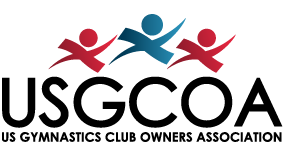Coach Behavior & Listening to Your Clients
When confronted with the rash of customer allegations and complaints regarding coach behavior, everyone’s kneejerk is to better educate the coaches. I agree with that. I would never downplay the value of training our staff to be better. I have been a proponent of coach education for as long as I can remember. I also do not want to, now or ever, diminish the serious nature of coach infractions against children. Our sport has evolved in so many ways, and yet the dinosaur mentality of utilizing verbal and emotional attacks as motivation still seems to linger in the shadows. Is coach education the way that we take the next evolutionary step? Maybe. For sure it is the right thing to do, but it is not the only method we need to employ.
Let us just take it that every gym owner has, by now, put steps into motion to assure that their staff has been educated and trained on positive coaching methods, understanding child psychology, and safety measures to assure the sport develops a healthy child through the vehicle of gymnastics.* Let’s, for clarity’s sake, assume that everyone has done that duty. Mission accomplished. What’s next?
Now we need to train your clients.
Most client complaints could be resolved or even eliminated if the customer felt that they were being heard. If a parent feels that you do not care or that you are not available, they will take their concern elsewhere. They may post a negative review, they may complain to USAG, they may pollute your lobby with toxic talk, and/or they will certainly spread the word that your gym is unworthy. The solution is basic marketing and customer service. 83% of people say that they will do business with, and recommend to others, a business that they trust. So, how are you earning their trust?
The best method of building a trusting relationship is to be available and provide open communication. Now that you have your staff trained to be a force for positive coaching, you need to make it easy for your customers to get in touch and provide feedback.
You must establish rules of communication and share them with the staff and the parents you serve. Drawing an actual map of what concerns are reported to what people will help parents know who to talk to. Writing rules and having clear guidelines for how the staff deal with issues will allow your employees to feel more comfortable knowing what they have authority to do. In cases of unexpected crisis your staff needs to know how to behave with your client. See the example in figure 1.
Internal communication is also especially important. Each level of concern should have an indication of who needs to be brought into the loop internally.

Figure 1:
Note that most resolutions here indicate to notify the superior. One could argue that a truly autonomous operation can resolve a conflict and not feel the need to validate their actions. It may allow them a feeling of ownership and empowerment. And, although that may be true, it hass been my experience that information should travel both ways. If everyone is informed of what was accomplished, they can reinforce the action/decision and give praise or correction for the job that was done.
For example, a tuition complaint should not be taken to the coach. And if it is brought to your office employee, what are they allowed to do? Refund? Can they adjust a charge? By understanding flow and authority, most concerns will be handled before the concern is elevated up the food chain to you, the owner.
We can never assume that one method of communication works for everyone. It is best to ask each client how they prefer to be contacted. We try to offer multiple support channels: email, text, phone, and in-person meetings are all available.
Personally, all my team gymnast’s parents have my cell phone number. I let them know that I will handle urgent matters and should be contacted if there is ever a question or concern about a coach, but they also know that there is a hierarchy of contact. Because of that, I am very rarely the first call. If I am, and it is out of order; I respond by telling the parent that I will forward the message to the appropriate person.
Most of our communication with our client/parents is done via email. Using email allows communication that respects a person’s time. “Email is particularly good where multiple parties need to be kept in the loop” says Adam Waissman, a supervisor at Max Borges Agency, a communications and digital strategy company. “Plus, with email there is always a record, and the records can be easily searched.” However, I feel that if the concern is of a personal or sensitive nature, a phone call or face to face meeting is always best.
Being open and transparent about your operation, goals and procedures not only keeps your customer from feeling alone and in the dark but allows them an acceptable avenue of redress. When they feel that they can talk to a person who will help them they rarely step outside the chain of communication. Keeping things in order and training your clients about who should hear what concern will keep them feeling safe and respected. No one would leave a program where that security is provided.
* If you have not provided training for your coaches to bring them up to current standards you should immediately make that your top priority. Feel free to reach out to USGCOA for resources on that task.
J. Orkowski


